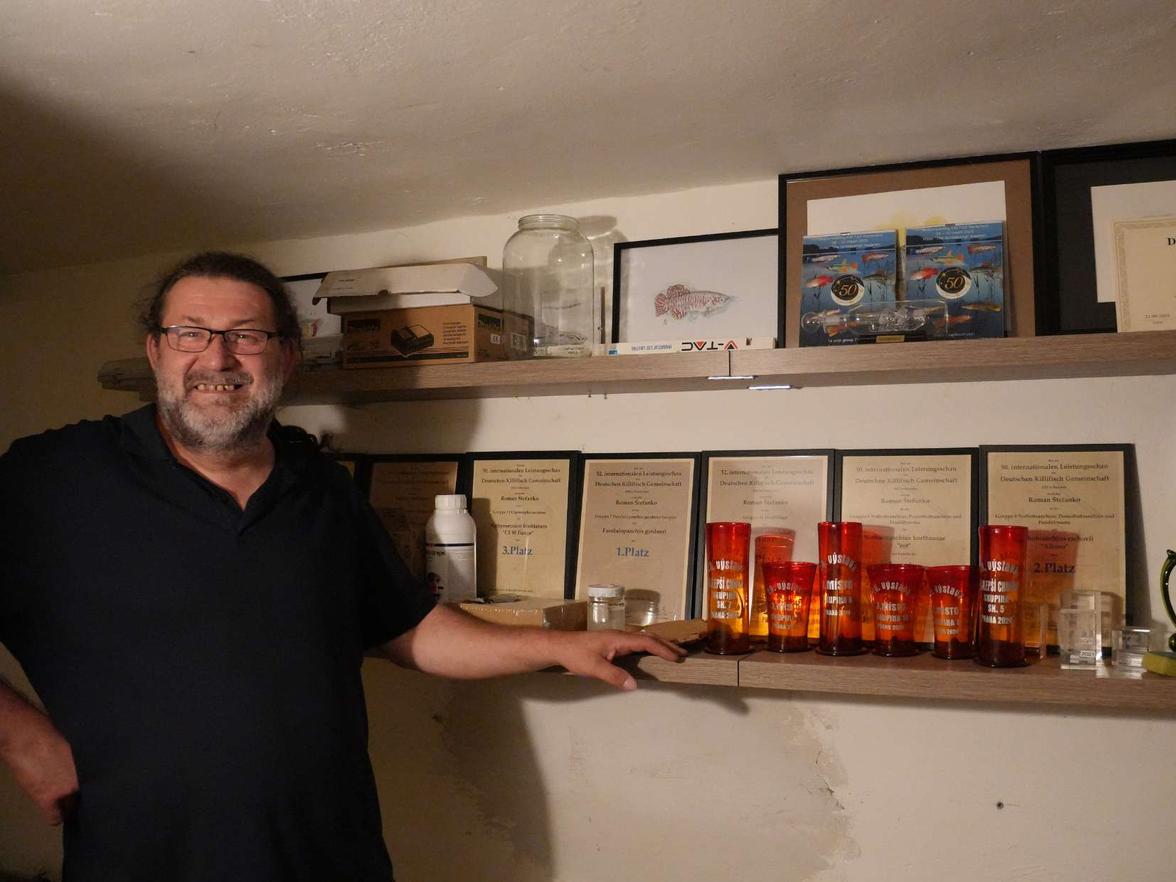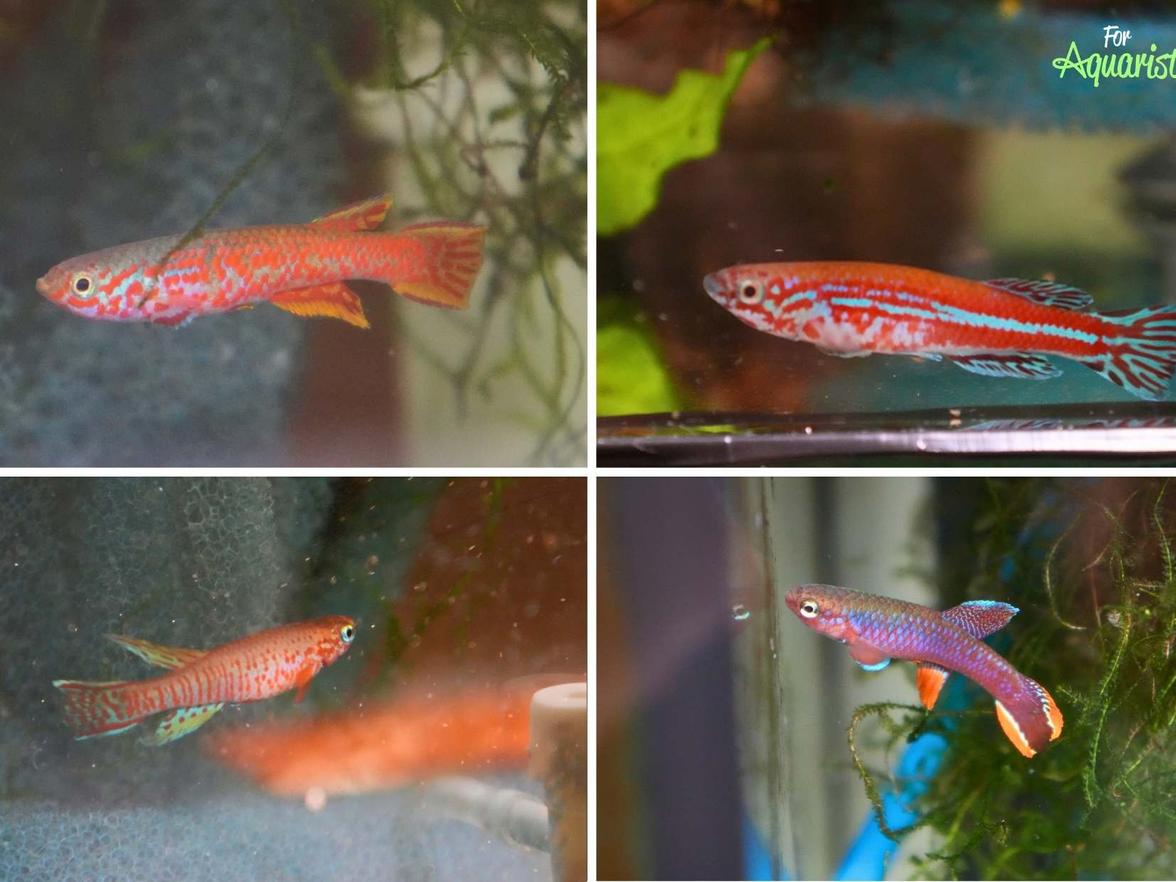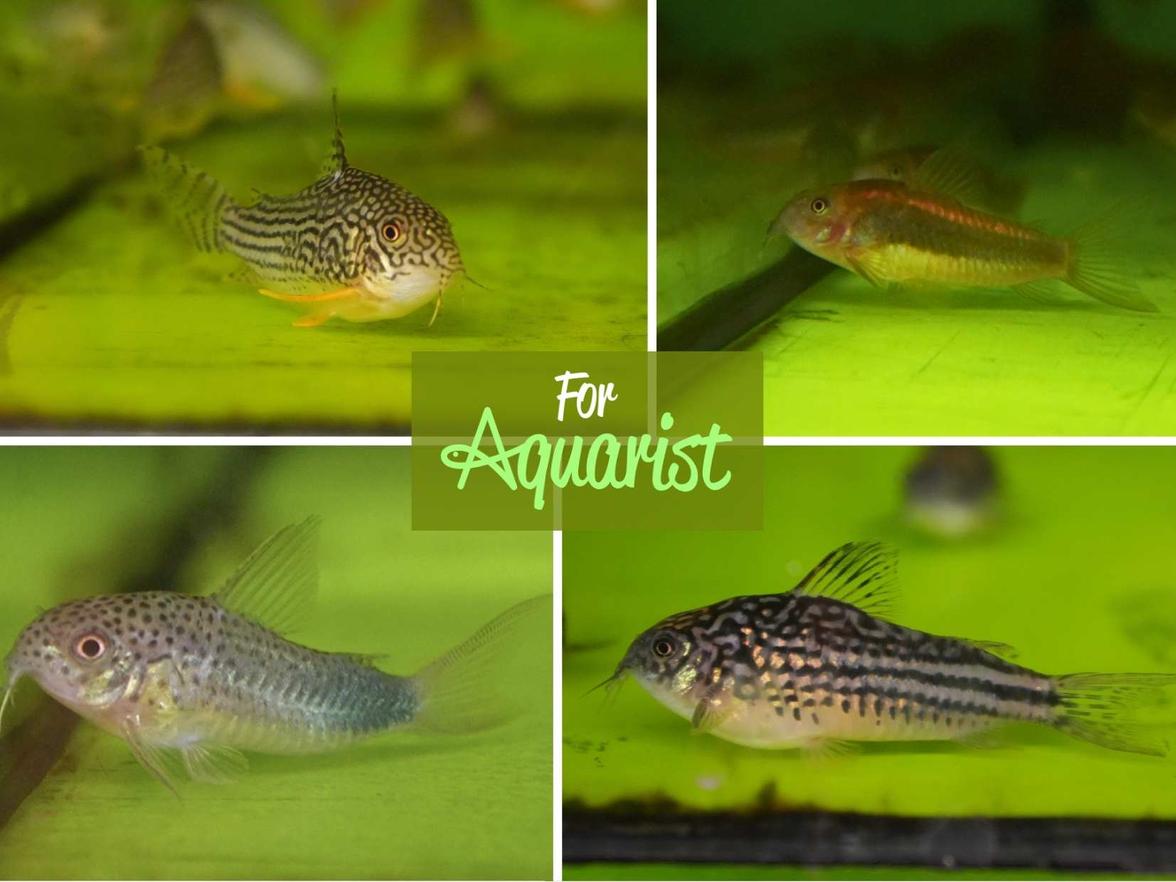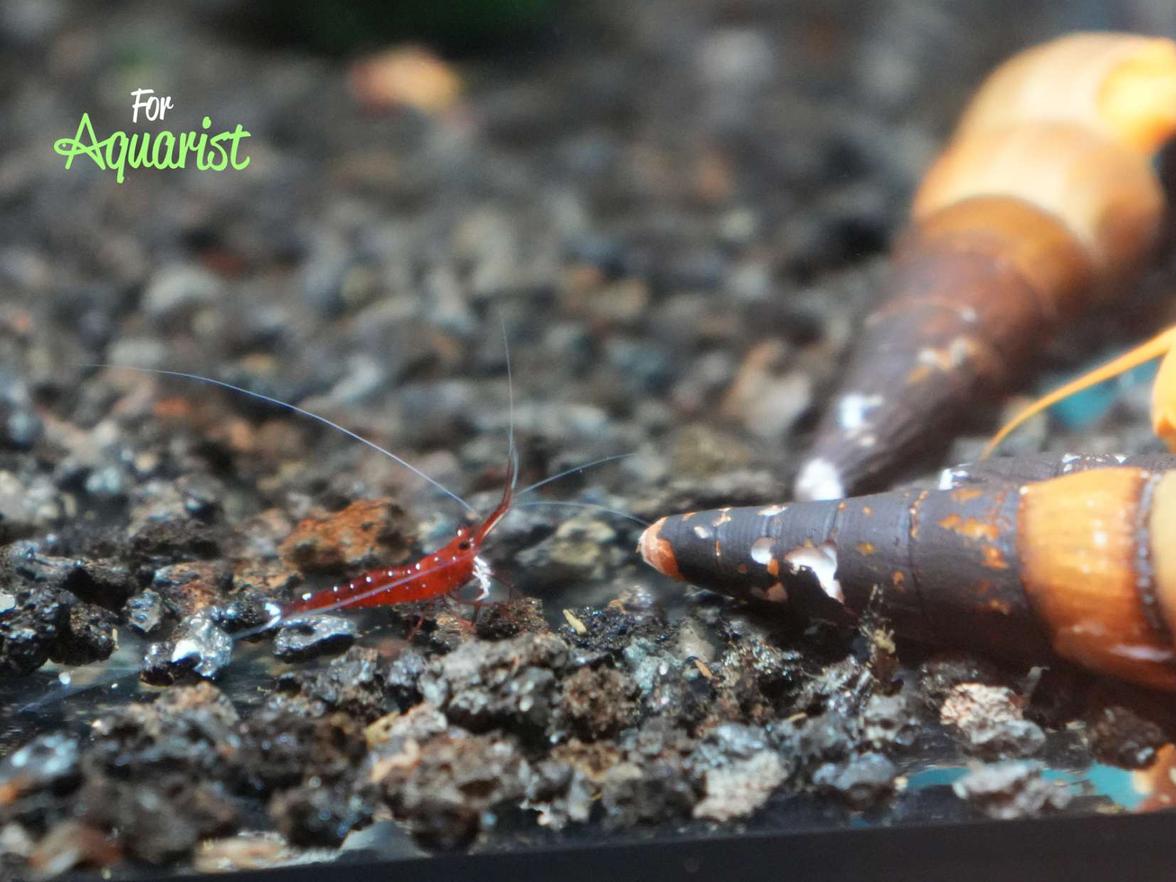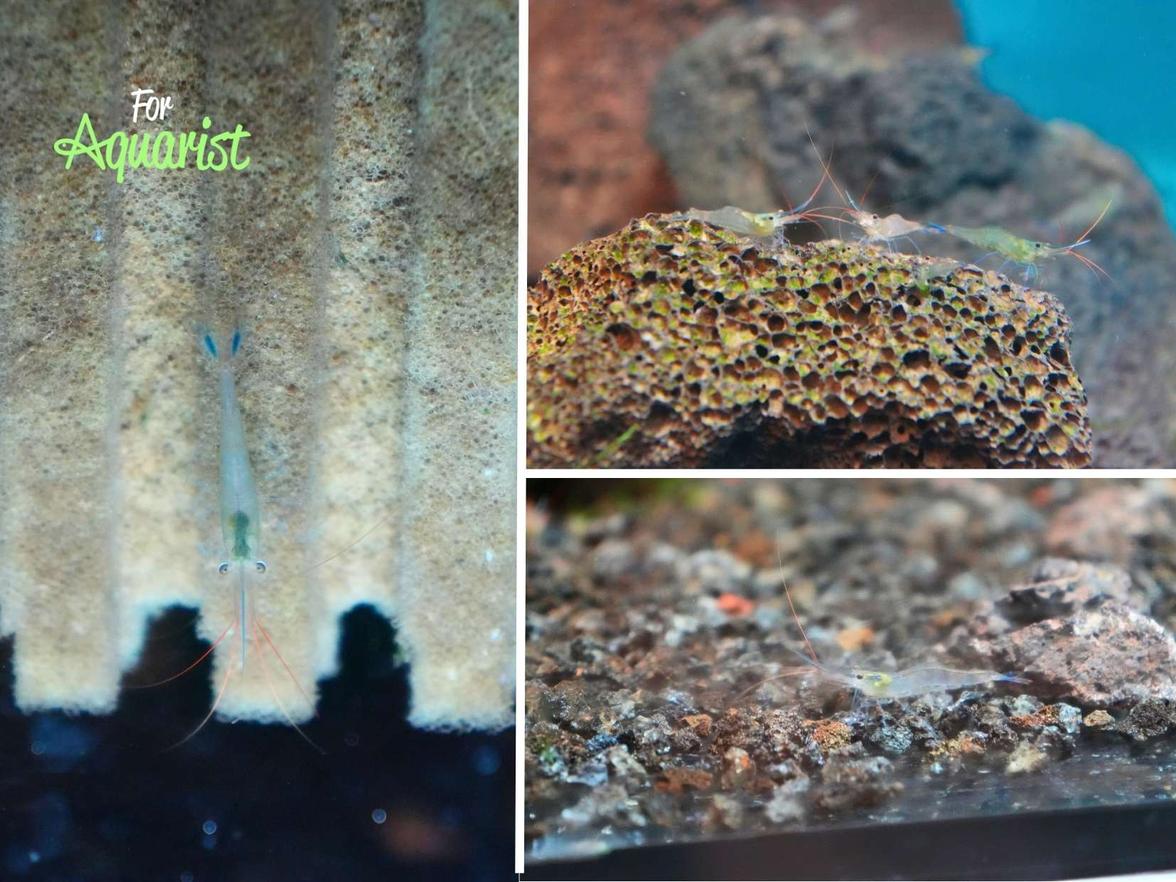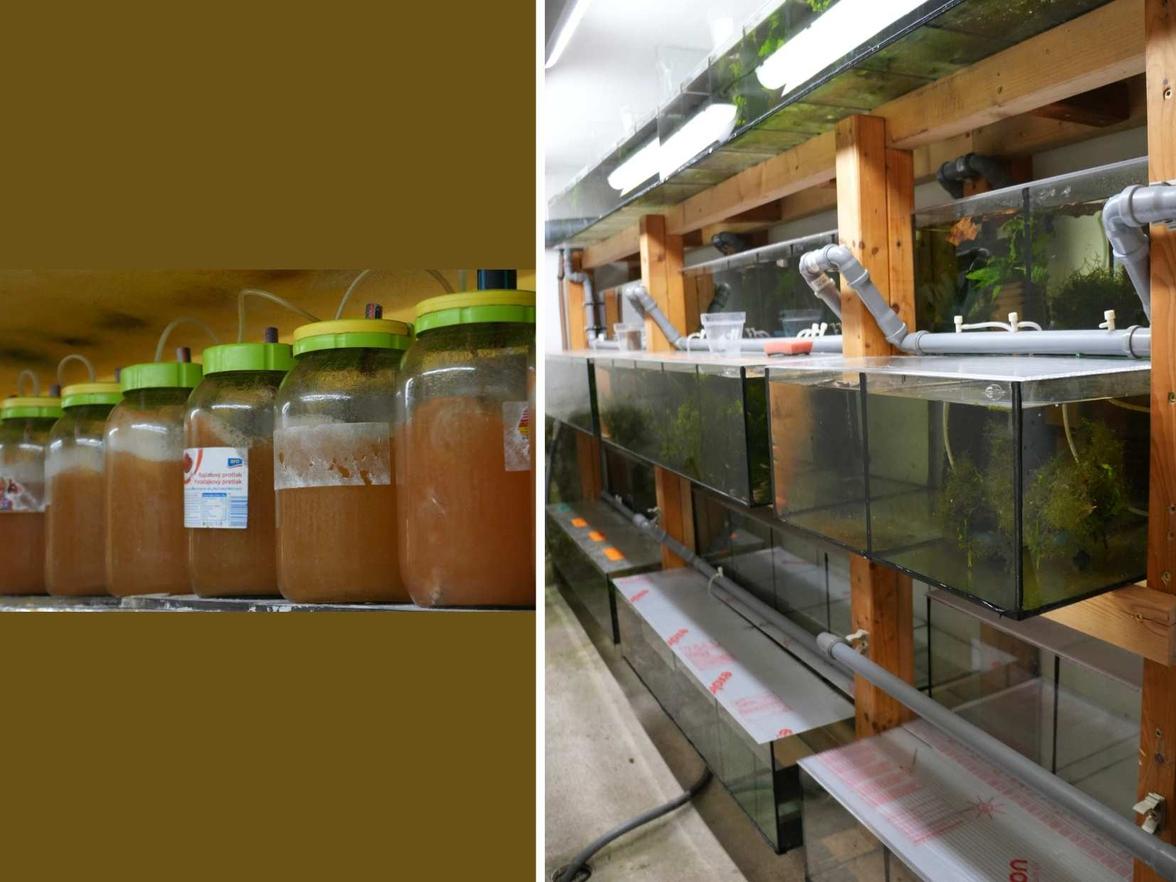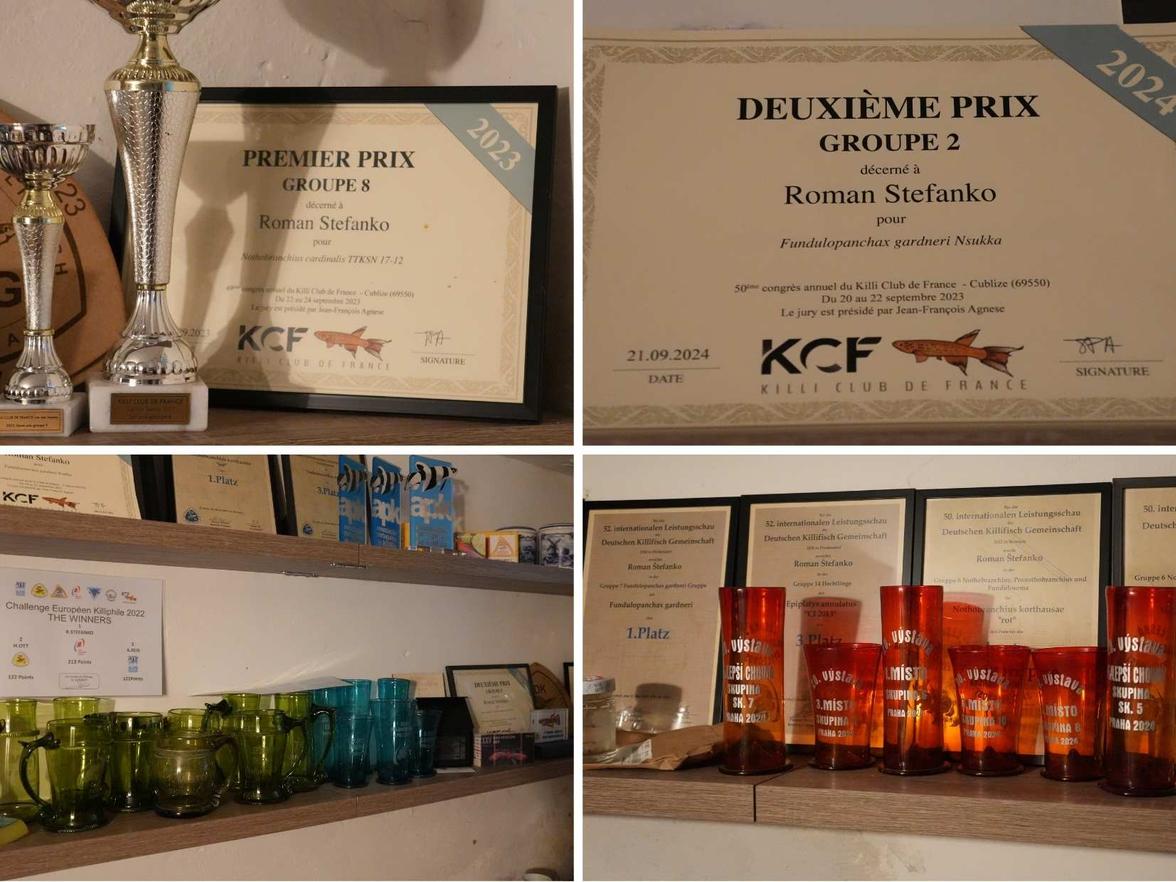An interview with aquarist Roman Štefánek, a three-time winner of European halančík exhibitions in the last three years, reveals the fascinating world of breeding rare fish. Discover why halančíci are so unique and what challenges come with breeding Sulawesi shrimp.
Upon arrival, it is clear that the house hides an aquarium breeding facility. In the yard, there are large empty tanks. I automatically walk through the open gate to the garage/basement, where I am warmly welcomed by the main personality of this interview, the three-time winner of international competitions for killifish, Mr. Roman Štefanko. Right at the entrance to the breeding facility, well-maintained tanks with beautiful fish can be seen inside. The deeper I go into the basement, the more interesting the pieces become, until I am completely captivated by a small room dedicated to killifish.
You have a beautiful place here, and those killifish...
The breeding stock we have for exhibitions is quite rare. It is possible to breed about 30 fish, and there are four males. Everyone says, "They won't survive." "I don't want that." Meanwhile, in cold water, they can survive for two or three years. I breed about 25 species just for exhibitions. Mainly Diapteron and small Aphyosemion, which thrive at a temperature of 16-22 °C.
Yes, temperature matters. I noticed that you have very nice aquariums with beautiful specimens.
I use hoses for cleaning and water changes.
A friend of mine moved here and sold me about 30 custom-made aquariums at a very good price. So I reorganized a bit. Originally, I had cubic tanks at the front where I bred the common neon. Just for about a year, but then I thought: "Money isn't everything. It's about health." We kept spawning 800 pieces. Every day 100 pairs. One day off and then again.
I was surprised, for example, that even large neon breeders count them manually. Meanwhile, there are machines for counting.
I know that one breeder in Germany has a huge breeding facility and produces half a million neons monthly. They have a sorter and count them, but they pack them terribly. Fish without fins, without eyes... everything. That's how it is there. But in Germany, they would like us to provide them with quality fish for 10 or 12 cents, so they are sorted.
Three crowns for a neon, that's unbelievable.
Our exporters have been competing with each other. They were insatiable. The peak of their greed was buying neons from Malaysia, repackaging them, and sending them to Germany as Czech fish. Today, it's so bad that nothing can be done about it.
I thought that there probably isn't a way out of that either.
We are currently breeding Pandas and we also had to lower the price.
About 10 years ago, they cost 40 CZK and in the store 70 CZK, but they didn't survive. Many people had a bad experience with them.
Many people breed Pandas. But that can happen.
Conservation breeding and Sulawesi shrimp
ForAquarist is indeed a project to support aquaristics and breeders.
I was just looking at your ads, and there are tons of them.
Not much can be found about you. Only your successes from the exhibitions of killifish. So let's start with how you got into fish breeding?
I have been breeding fish since I was little. Before the army, I had a couple of aquariums, and after the army, I started doing aquarium fish full-time. I started after the army with Malawi cichlids and Tanganyika. I had it in a panel apartment. I got up in the morning at four, took care of the fish, went to work at six (I drove a truck), and after work, I did it again. That went on for about eight years.
What kind of fish did you have in your childhood?
Betta, peacock eyes on the glass. In 1980, it wasn't easy at all. There weren't many glues to hold things together. It was all framed. There was no putty.
We breed about six species for sale.
What is there are Sulawesi shrimp, and they are not for sale. I unofficially help the zoo. I assist them with conservation breeding, so we keep it together. I found us two more species to have Caridina spongicola and masapi
In the zoo, they have them on white sand, and there is one stone, and all the shrimp are visible. But the moment they are given their natural environment, they might be at the edge of the rock, and when they see me, the shrimp freezes and starts backing away. There are many Dennerli there, and they know that nothing threatens them, so they are well visible.
I saw them in that zoo, and I know the guy who takes care of them, so I said, "I want to do that. What should I buy? Show me how it's done. How do you take care of them?"
In the end, it's probably not that hard to meet the basic conditions. For us, who know how to take care of them, it's not hard. It's about keeping the water clean from nitrogenous substances and dissolving minerals into the water, so when you can achieve 8.5 pH, the more demanding species from Sulawesi will carry eggs. They all carry, but they won't carry them if the pH isn't high enough. They will lose them.
So do you buy any products for that?
Mineral salts. They are sold directly from Sulawesi. You can find everything for money.
The worse part is that it needs to be maintained at 28 °C. So it requires a lot of heating.
I have allocated seven tanks and am ready to help with seven species. We'll see if we can manage to get them. Let's hope for that.
And what if you went to the place? Maybe you could set it up there, and it might make sense.
Maybe, but for now, I'm looking. We were supposed to receive three species from Indonesia, but it collapsed due to European permits.
The company from Asia didn't want to arrange special European veterinary permits. They would have to connect here with a certain buyer, and they said no, that they wouldn't deal with it. They said they had sufficient permits to sell worldwide, but due to the EU, they wouldn't do anything extra. And that was it. So we could have had three more species that we don't have here.
That's a shame.
It's a shame. I always bought about 30-50 of them, shared them with the zoo, which I gave for free. I have a very good collaboration with them.
Diversity of species and breeding specifics
And I still have wild livebearers here.
They are beautiful. You wouldn't believe how pretty they are.
We have Xiphophorus heller yucatan I and II. We have Xiphophorus signum Xiphophorus pygmeus and Xiphophorus montezumae. They are beautiful. The fish is 7-10 cm long, and the same length of the sword or even longer.
I have a breeding stock here.
I was thinking about what species would be suitable for people who would want an aquarium with species that would be well visible, so-called from the couch.
These fish get used to people, so that would work. For example, I have Xiphophorus montezumae down at the bottom. They want cooler water and a bit stronger current and a place to hide.
In nature, there is a current in the stream, and the male hides behind a rock to not exhaust himself too much, and when another comes, he drives him away, or the female hides there.
The only thing is that I can't keep plants here. I don't have enough light. When I feed with frozen food, it sticks to the plants. That’s hard. So they have artificial, like mops (e.g., brushes for pond filters).
When the fry have nowhere to hide, they would be eaten. So the young ones hide there, always just peeking out and immediately back, and until they are an inch and a half, they won't come out.
Killifish: Your experiences and successes
How did you actually get into killifish? Completely by chance.
I saw it with someone, and the colors fascinated me so much that I wanted to try it. At first, I had Fundulopanchax, and I immediately wanted to try Nothobranchius too. I had never done that before, so it intrigued me. Then I stuck with it.
How long have you been breeding killifish?
Not long. About seven years.
Considering how many awards you have...
That's in the last three years. Because I was persuaded by the former president of the Czech Killifish Society. He announced to me: "So Roman, you'll be with us." And I was already a member. And after two years, he asked me to exhibit.
So I started exhibiting. The goal was to have at least two Czechs in the top ten. So in the first year, I immediately won a European award. In the second year, the president told me: "Roman, it would be nice if you won again," so I managed to win again. By then, I said: "Third year, and then I will only exhibit smaller quantities; it was really demanding."
Last year, we were first as a club.
I noticed that in the killifish association, there are about 20 members in total.
Yes, roughly.
Of those, active members are about ten. Among those who have more aquariums, there are about seven or eight of us. There are also many members who only pay contributions but don't actually do anything. It's kind of dead. Not even people come to see the exhibition.
It's a shame that the date overlaps with the Rychnov exhibition.
Awareness of these fish is minimal. People often think it's a killer fish, which is not true. They also think they can't be kept with other fish. (Ondřej Dočkal wrote about this in an article, see Killifish – beautiful, diverse, are they suitable for you?)
That's what's interesting about aquaristics, that in some areas there are huge turnovers. For example, some e-shops.
I am annoyed by those e-shops that sell goods cheaper than small shops, where they pay rent, and for them to make sense of business, they need to have a margin.
For example, here in Příbram, they have great fish, but people don't go there for fish. They prefer to go to Tesco, to SuperZoo. The salespeople don't understand it and can't advise. Here in the local store, they will tell them what will work.
ForAquarist is set up to enable support for small traders and breeders.
A friend also told me that, for example, on Facebook, he had 3000 people and boasted about how much he earned from it when he bought fish and sold them in that group. He offered me a buyout, but I won't do that. I don't have the time or inclination for it. Once a week, I pack fish for wholesale to Germany, and that quantity earns me enough for expenses and hobby breeding.
In very few fish stores will you find fish that are not for profit. With many people, there are only fish for profit, and not one for pleasure.
When we return to killifish, what do you find the most challenging about their breeding?
They breed relatively well, but with many species, there is a problem with hatching eggs. For example, the veyjírkovky. After 3-6 months, you fill a bag, and 100 eggs look at you, and four fish come out. It gets re-filled, and maybe 20 fish come out, and the remaining 70 you might never get. Another bag, and there are 100 fish.
So it is unpredictable.
I only take the hatched fry that survive there. I take from Diapterons every month and a half around a hundred fry. That is already a demanding fish, but when they have the conditions they need, it can be done. Most species are relatively easy to breed and raise.
Fish from nature breed super well, hatch well, but their offspring do not. For example, they might just lack food from nature. For example, some ants or something else. So it can happen that they no longer breed, but in three years, someone might go there again on an expedition and bring them back. Otherwise, I don't think killifish are poorly breedable. There are species that breed difficultly, but I think most are relatively easy to breed, and about 30% will be difficult. Of course, that's just my opinion.
It depends on how the public perceives it, whether they don't see it as a short-lived, difficult fish.
Everyone knows them as Killifish, and just that name.
I know it's Danish mudfish.
Yes, it is said that in every elephant's dung, fish settle and breed.
For beginners, Fundulopanchax gardneri are very easy to breed. Also, Fundulopanchax amieti could work for those beginners. There are also many fish of the genus Aphyosemion, they are beautiful fish and can be bred easily. Just a little softer water is enough.
And how long will they live?
Fundulopanchax, Aphyosemion 2-4 years. Epiplatys even 10 years and will suffice at 18-22 °C.
Nothobranchius, a beautiful fish. For the aquarium, a glass jar from pickles. Put in 2 cm of peat or coconut fiber, put in one male and two females, and they will spawn in it. Everyone can try it. Pour off the peat with the eggs, squeeze it out. Some species can be poured even after one month.
What I find interesting is that if aquarists want to take a break, they can hide the eggs and let the adults grow.
For that, Nothobranchius are great. They can be poured, for example, after 5-7 months, depending on the temperature. They are breeding fish that die after half a year to eight months. They can breed even at 20 °C every day. A female lays, for example, six eggs a day. And then I can pour them whenever I want.
Which killifish do you like the most?
We passionate killifish breeders would need to have all of them. I kept about 45 species and gave them away. It was no longer feasible; this quantity is really hard to manage. I tried a bit of everything.
The second part of the interview will be published soon.
